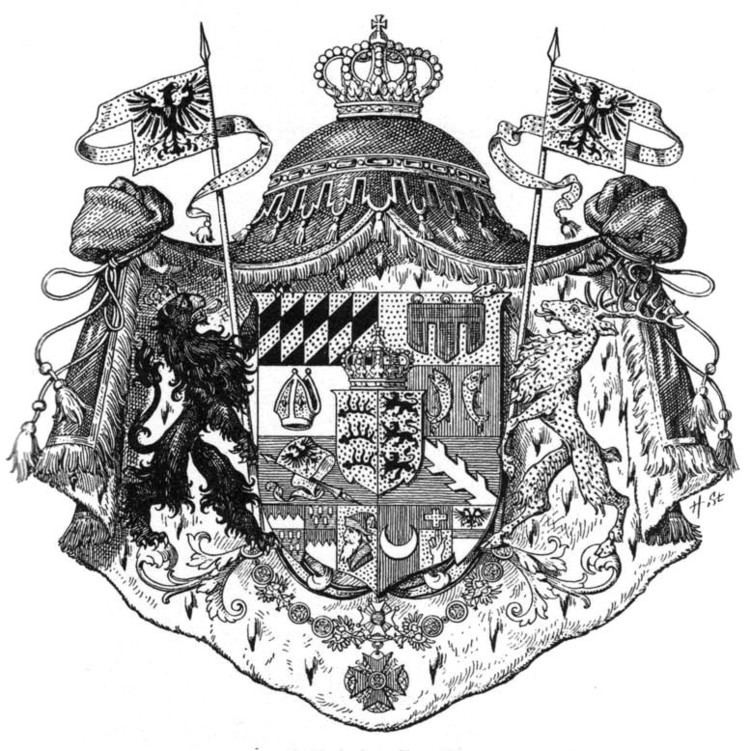Crest King's helm and Crown | ||
 | ||
Escutcheon Per pale: on the dexter, the shield of Württemberg, on the sinister, the shield of Swabia Supporters On the dexter, a black lion crowned; on the sinister, a gold deer Motto Furchtlos und trew (Fearless and loyal) Other elements Surrounded by laurel and palm branches | ||
The coat of arms of the Kingdom of Württemberg shows an impalement of the three black antlers that represent Württemberg on the dexter (viewer's left) side; and the three black lions passant of medieval Swabia on the sinister (viewer's right) side, both on a gold field.
Contents
It was formally adopted by King William on 30 December 1817, lasting between 1817 and 1922, occasionally seen on state flags of this period.
This version derived from the escutcheon found in the centre of the much larger and more elaborate coat of arms that was used when Württemberg was elevated to the status of a kingdom in 1806. Württemberg had recently acquired several territories under the mediatisation system, and incorporated their heraldries into its arms, resulting in an overcomplicated design. This caused the need to choose something much simpler, and the 1817 arms had the two essential elements – 3 lions for the whole region of Swabia, and 3 antlers for its largest ruling dynasty.
By 26 December 1816, the Kingdom had also settled on the colours red and black for its flag; gold and black being too similar to the ruling Habsburg dynasty of Austria, and red and gold being the colours of Würzburg, their allies in the Napoleonic Wars.
The ducal arms 1495−1806
The deer antler motif had been used for at least five centuries previously by the Counts of Württemberg. From 1495 the royal dukedom's coat of arms included the 4 quarters shown below. Their symbolism is:
Arms
Crests
Other quarterings were added in the 18th century.
The arms used after 1918
After the abdication of the last king in 1918, the Free People's State of Württemberg continued to use the three antlers motif and the former kingdom's flag on its coat of arms. Today, the larger version of the Coat of arms of Baden-Württemberg includes the three Swabian lions and a small shield on top with the three antlers of Württemberg. The arms can also be seen in the trademark of Porsche, a local car firm.
During the Nazi era, the state of Württemberg became virtually defunct due to the de facto transformation of Germany from a federal to a unitary state. Yet Württemberg adopted a new coat of arms which was a slightly modified version of the Republican arms.
After the defeat of Nazi Germany in World War II, Württemberg was split into two successor states along the borders of the occupation zones: Württemberg-Baden in American-administered Germany, which also included the northern part of Baden, and Württemberg-Hohenzollern in the French occupation zone, which also included the Prussian territory of Hohenzollern. Both states adopted their own flags and coat of arms. They joined the Federal Republic of Germany in 1949 and were subsequently merged with South Baden into the present-day state of Baden-Württemberg in 1952.
